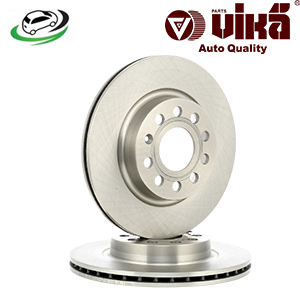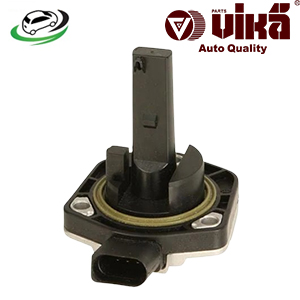-47%
Get Front Suspension Stabilizer Bar Bushing AUDI A3 8L1/TT / VW Golf IV/MK4/MK5 1J1 1J0411314T
A suspension stabilizer bar bushing, also known as a sway bar bushing, is a crucial component in a vehicle’s suspension system. It serves to mount the stabilizer bar (or sway bar) to the vehicle’s frame while allowing it to flex and rotate. This detailed exploration covers the construction, function, benefits, common issues, signs of failure, and maintenance of stabilizer bar bushings.
Construction and Function of a Suspension Stabilizer Bar Bushing
Construction:
- Materials:
- Rubber: Most stabilizer bar bushings are made from rubber, which provides flexibility and damping.
- Polyurethane: Some aftermarket and performance bushings are made from polyurethane, offering increased durability and performance characteristics.
- Design: Bushings are typically designed to fit snugly around the stabilizer bar and within the mounting brackets on the vehicle’s frame.
- Shapes:
- Split Design: Many bushings have a split design, making them easier to install without having to remove the entire stabilizer bar.
- Solid Design: Some bushings are solid and require more effort to install but can offer better durability and performance.
Function:
- Damping and Isolation:
- Vibration Absorption: Bushings absorb vibrations and shocks from the road, preventing them from being transmitted to the vehicle’s chassis.
- Noise Reduction: They help reduce noise from the suspension system, providing a quieter ride.
- Stabilizer Bar Functionality:
- Pivot Point: Bushings allow the stabilizer bar to pivot, enabling it to counteract body roll during cornering.
- Alignment: They help keep the stabilizer bar aligned and in place, ensuring it functions effectively.
Benefits of Suspension Stabilizer Bar Bushings
- Improved Handling:
- Reduced Body Roll: By allowing the stabilizer bar to function correctly, bushings help reduce body roll during cornering, enhancing vehicle stability and handling.
- Better Control: They contribute to more responsive steering and improved control, especially during high-speed maneuvers.
- Enhanced Comfort:
- Vibration Damping: Bushings absorb vibrations from the road, contributing to a smoother and more comfortable ride.
- Noise Reduction: They help isolate noise from the suspension system, making for a quieter driving experience.
- Durability:
- Longevity: High-quality bushings, particularly those made from polyurethane, are designed to withstand the rigors of driving and last for many years.
- Protection: They protect the stabilizer bar and mounting points from excessive wear and stress, extending the life of these components.
- Cost-Effective Maintenance:
- Affordable Replacement: Stabilizer bar bushings are relatively inexpensive and can be replaced without major disassembly of the suspension system.
- Preventative Maintenance: Regular inspection and timely replacement of worn bushings can prevent more significant suspension issues and costly repairs.
Common Issues with Suspension Stabilizer Bar Bushings
- Wear and Tear:
- Rubber Deterioration: Over time, rubber bushings can harden, crack, or deteriorate due to exposure to the elements and constant flexing.
- Polyurethane Wear: While more durable, polyurethane bushings can also wear out under high-stress conditions.
- Noise:
- Squeaking or Creaking: Worn or damaged bushings can cause squeaking or creaking noises, especially when driving over bumps or rough roads.
- Clunking: Loose or excessively worn bushings can cause clunking noises as the stabilizer bar moves excessively.
- Reduced Performance:
- Increased Body Roll: Worn bushings can allow more movement of the stabilizer bar, leading to increased body roll and reduced handling performance.
- Vibration Transmission: Deteriorated bushings can transmit more road vibrations to the chassis, reducing ride comfort.
- Misalignment:
- Suspension Misalignment: Worn or damaged bushings can cause misalignment of the stabilizer bar, affecting overall suspension geometry and performance.
- Excessive Movement: Excessive movement in the stabilizer bar due to worn bushings can lead to instability and unpredictable handling.
Signs of Failing Stabilizer Bar Bushings
- Unusual Noises:
- Squeaking or Creaking: Persistent squeaking or creaking noises from the suspension, especially when going over bumps, can indicate worn bushings.
- Clunking Sounds: Clunking or knocking noises during cornering or driving over rough roads can be a sign of excessive movement in the stabilizer bar due to worn bushings.
- Poor Handling:
- Increased Body Roll: If the vehicle exhibits more body roll during cornering, it could indicate that the stabilizer bar bushings are worn and not providing adequate support.
- Unstable Ride: A feeling of instability or looseness in the suspension, particularly during cornering, may suggest bushing issues.
- Visible Wear:
- Cracks or Splits: Visual inspection of the bushings may reveal cracks, splits, or signs of deterioration.
- Displacement: If the bushing appears displaced or is moving excessively within its mounting bracket, it’s likely worn or damaged.
- Tire Wear:
- Uneven Wear: Uneven tire wear, particularly on the vehicle’s outside edges, can be a sign of suspension issues related to worn bushings.
- Rapid Wear: Accelerated tire wear may also indicate alignment problems caused by bushing wear.
Maintenance and Replacement of Suspension Stabilizer Bar Bushings
- Regular Inspections:
- Visual Checks: Regularly inspect the stabilizer bar bushings for signs of wear, cracks, or displacement.
- Listen for Noises: Pay attention to any unusual noises from the suspension during driving, which may indicate worn bushings.
- Timely Replacement:
- Replace When Worn: Replace the bushings as soon as signs of wear or damage are detected to maintain vehicle stability and handling.
- Use Quality Parts: Opt for high-quality rubber or polyurethane bushings to ensure durability and performance.
- Professional Installation:
- Proper Fitment: Ensure that bushings are correctly fitted to avoid issues with alignment or excessive movement.
- Torque Specifications: Follow the manufacturer’s torque specifications when tightening the mounting brackets to avoid over-compression or under-tightening.
- Consider Upgrades:
- Polyurethane Bushings: For enhanced performance and durability, consider upgrading to polyurethane bushings.
- Performance Bushings: For high-performance or off-road vehicles, specialized bushings designed for specific driving conditions can be beneficial.
- Routine Maintenance:
- Lubrication: Some bushings, particularly polyurethane types, may benefit from periodic lubrication to prevent squeaking and ensure smooth operation.
- Suspension Check: Regularly check the entire suspension system for wear and replace components as needed to maintain optimal performance.
Follow us on Facebook for more parts.



